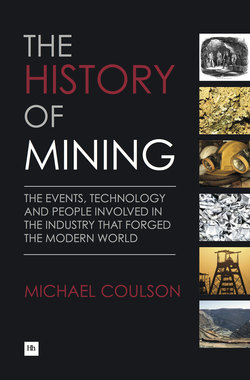Читать книгу The History of Mining - Michael Coulson - Страница 58
На сайте Литреса книга снята с продажи.
2. Diamonds in South Africa
ОглавлениеSouth Africa was the most important source of diamonds for the worldwide diamond jewellery industry for over a century, its lead position only beginning to waver in the 1970s following the huge discoveries in neighbouring Botswana. Before the South African discoveries in the 19th century diamonds were found primarily in India in alluvial settings, until in the 1700s production fell away to be replaced by alluvial production from Brazil, as we learnt earlier.
The first diamond officially discovered in South Africa was the Eureka, a 21-carat stone found near Hopetown in the Cape Colony in 1867. It had been in the possession of Schalk van Niekerk, a farmer with an interest in gem stones, who enlisted the help of John O’Reilly, a trader, to determine whether the stone was a diamond. There was deep scepticism in Hopetown about the stone’s provenance but in due course it was sent to a geologist in Grahamstown, Dr William Atherstone, who agreed with O’Reilly that it was a diamond; it was eventually valued at £500. Two years later another diamond came into the possession of van Niekerk, who bought it from a shepherd in exchange for livestock. This stone, at 83 carats, was much bigger than Eureka, and having been cut and polished was eventually sold for £30,000 in London to the Earl of Dudley. The stone was named The Star of South Africa and its discovery set off a diamond rush to the Cape.
Strangely, despite the original Hopetown discoveries the area failed to live up to its early promise and prospectors moved on to the far more prospective Vaal River to the north. Here the Cape Colony butted up to the Boer republics of the Orange Free State and the Transvaal; the local tribe, the Griquas, also had land claims in the area. The Vaal River diggings had been worked for a number of years and as discoveries were made at Klipdrift on the north side and at Pniel on the south side, potential political conflicts became inevitable.
The work was hard but straightforward – mud and gravel was removed from the river and riverbanks, and then sieved through a mesh placed over a cradle. Water was poured through the mesh to dissolve and wash away the loose mud, leaving only the stones and gravel. The contents were then removed from the cradle and placed on a table for examination and sorting. Initially the diggings were broadly peaceful, with behaviour well above the levels most mining rushes experience.
